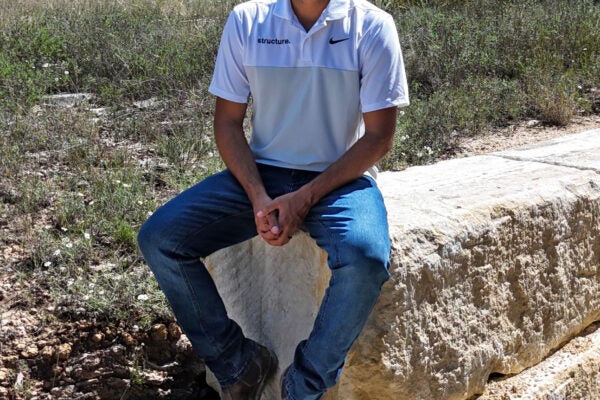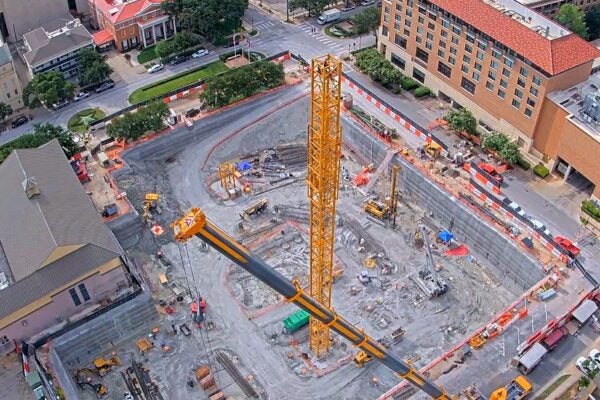A Pioneering Legacy
Santa Rita No. 1 Birthed The Biggest US Oil Field And Continues To Inspire Growth And Transformation
by Alice Popovici
1919
An oil field, a lease, and a plan
When Reagan County lawyer Rupert Ricker leased 431,360 acres of University of Texas-owned land in what would become the largest oil field in the U.S., he couldn’t find backers to help pay the $43,136 drilling fee. In 1919, oil prospecting in West Texas’ Permian Basin, where oil had not yet been found, was risky. Ricker sold the lease to his friend, Frank Pickrell, and Pickrell’s partner, Haymon Krupp. They borrowed the fee money, formed Texon Oil and Land Company, and financed the Reagan County drilling operation with stock sales and certificates of interest.
1921
Origin story
Drilling for Santa Rita No. 1, the first well in the field, began Jan. 8, 1921. When salesmen with Pickrell and Krupp tried to sell company stock to a group of Catholic women and nuns in New York, the women sought counsel from their priest. He suggested appealing to Santa Rita, patron saint of impossible causes. The women asked Pickrell to climb to the top of the oil tower and sprinkle rose petals blessed in the saint’s name, which he did.
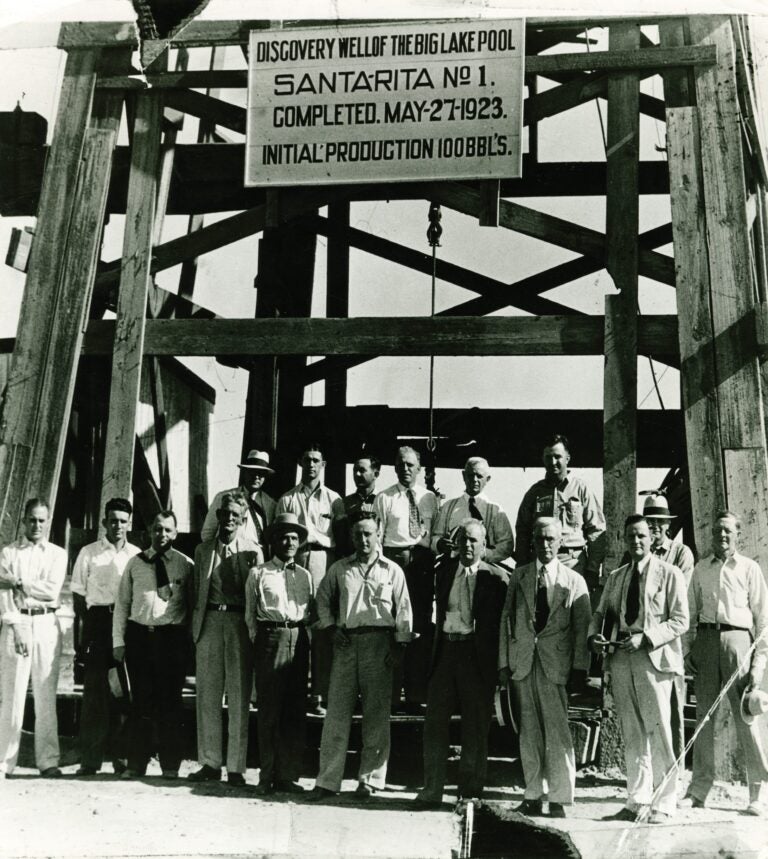
1923
Discovery
Carl Cromwell, who had worked in Pennsylvania and Oklahoma oil fields, led a mostly inexperienced drilling crew. In two years, they reached a depth of about 3,050 feet when they noticed gas bubbles rising to the surface. Oil gushed a few days later on May 28, 1923. Witnesses said it first sounded like a rattlesnake, then like wind blowing across the prairie. The discovery in the Big Lake oil field would yield over 2.4 billion barrels during the well’s 67 years — and shape UT’s future. The discovery spawned nearby wells that UT still leases.
1924
Boom town
In October 1923, prospectors Mike Benedum and Joe Trees took over some Texon Oil leases and formed the Big Lake Oil Company. A year later, company manager Levi Smith began building the town of Texon, which grew to 1,200 residents before declining and ultimately disappearing in the early 2000s.
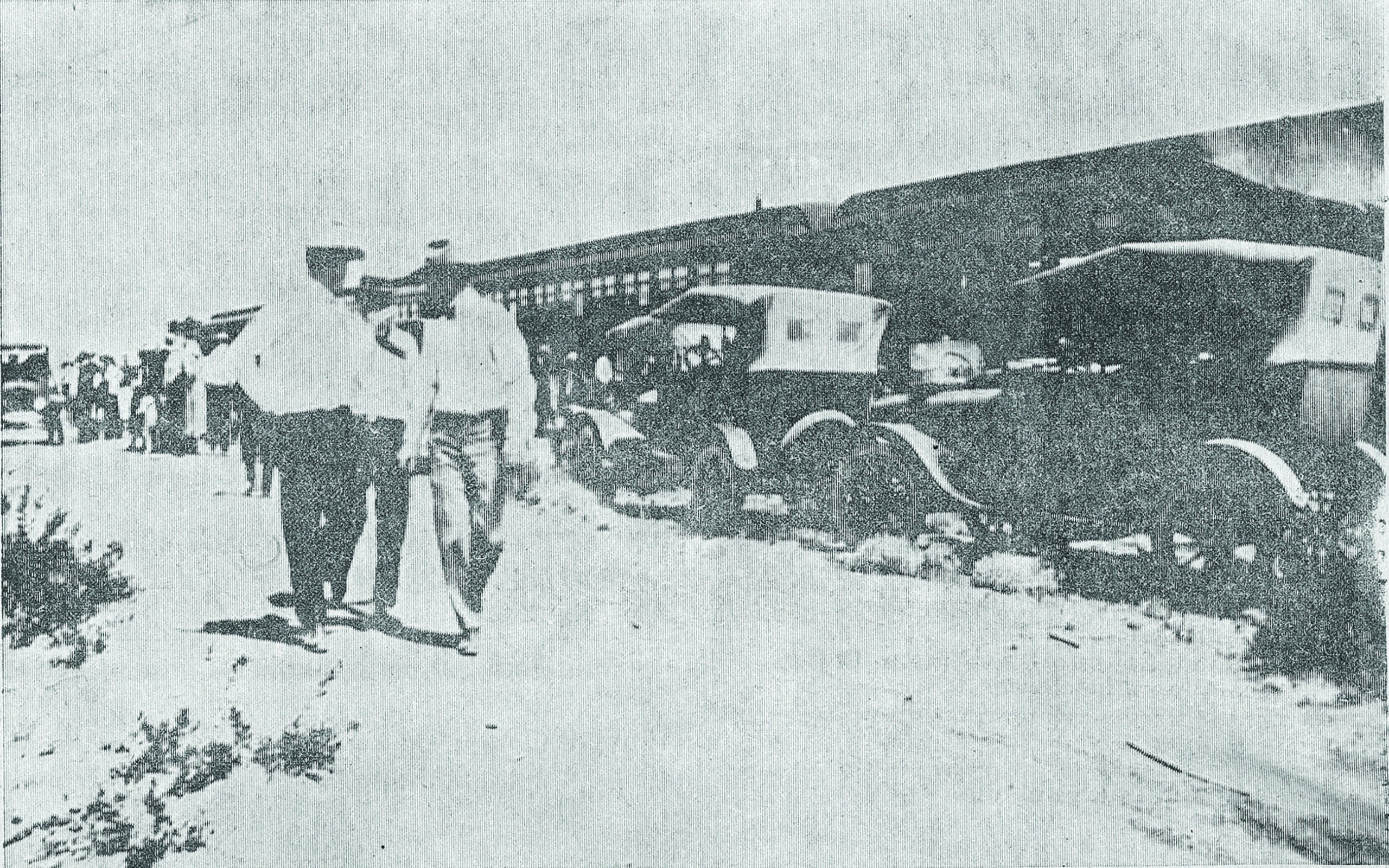
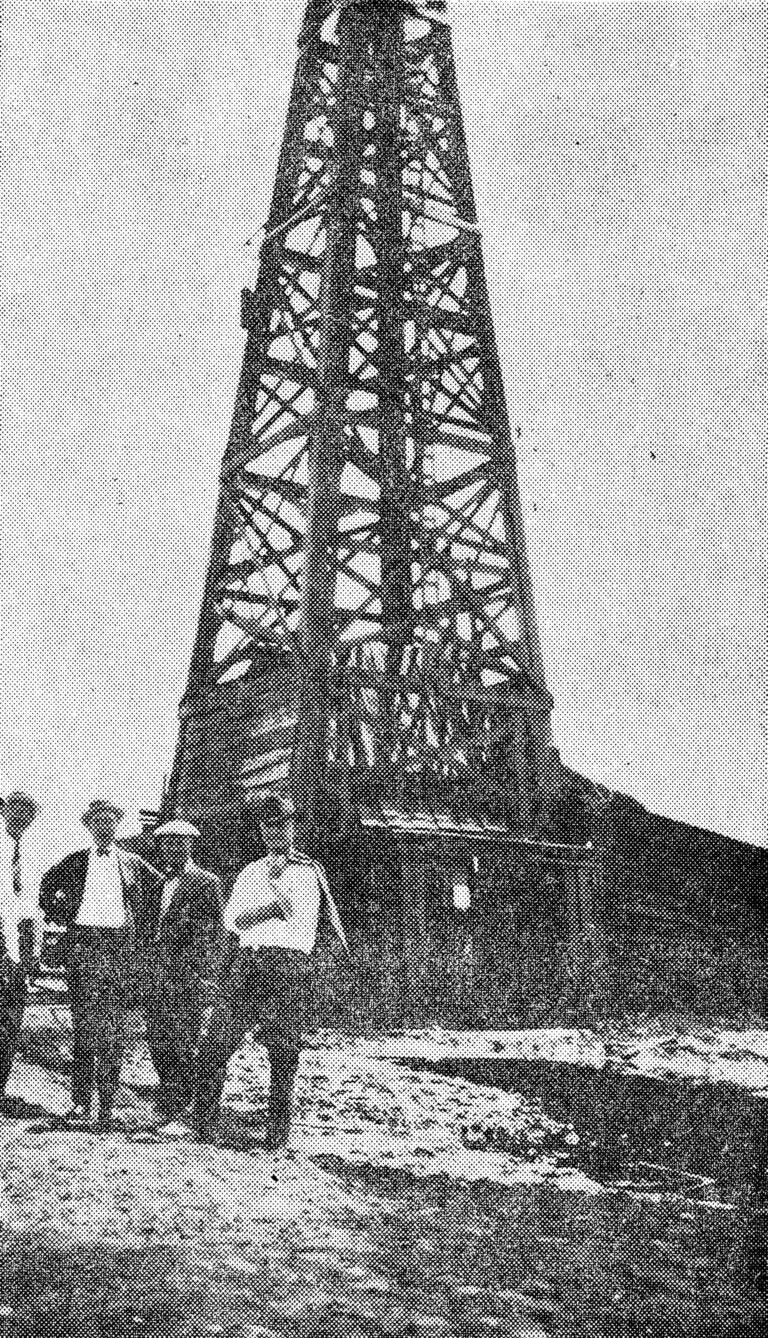
1925
A booming endowment
Established in 1876 by the Texas Constitution to financially support higher education in the state, the Permanent University Fund (PUF) consisted of land grants that generated a relatively modest income until Santa Rita gushed oil. The first PUF royalty payment was made Aug. 24, 1923, a mere $516.53. By 1925, it was earning $2,000 per day, or more than $36,000 a day in today’s dollars. As of 2024, the PUF, which funds the UT and Texas A&M systems, controlled a portfolio totaling $36.5 billion in investments and 2.1 million acres in Texas. It is among the nation’s richest university endowments.
1940
A new Austin home
Oil continued flowing from the site, but the rig for Santa Rita No. 1 was moved to UT Austin in 1940, with help from the Texas State Historical Association. It is now displayed at Martin Luther King Jr. Boulevard between Trinity Street and San Jacinto Boulevard to memorialize its significance to UT.
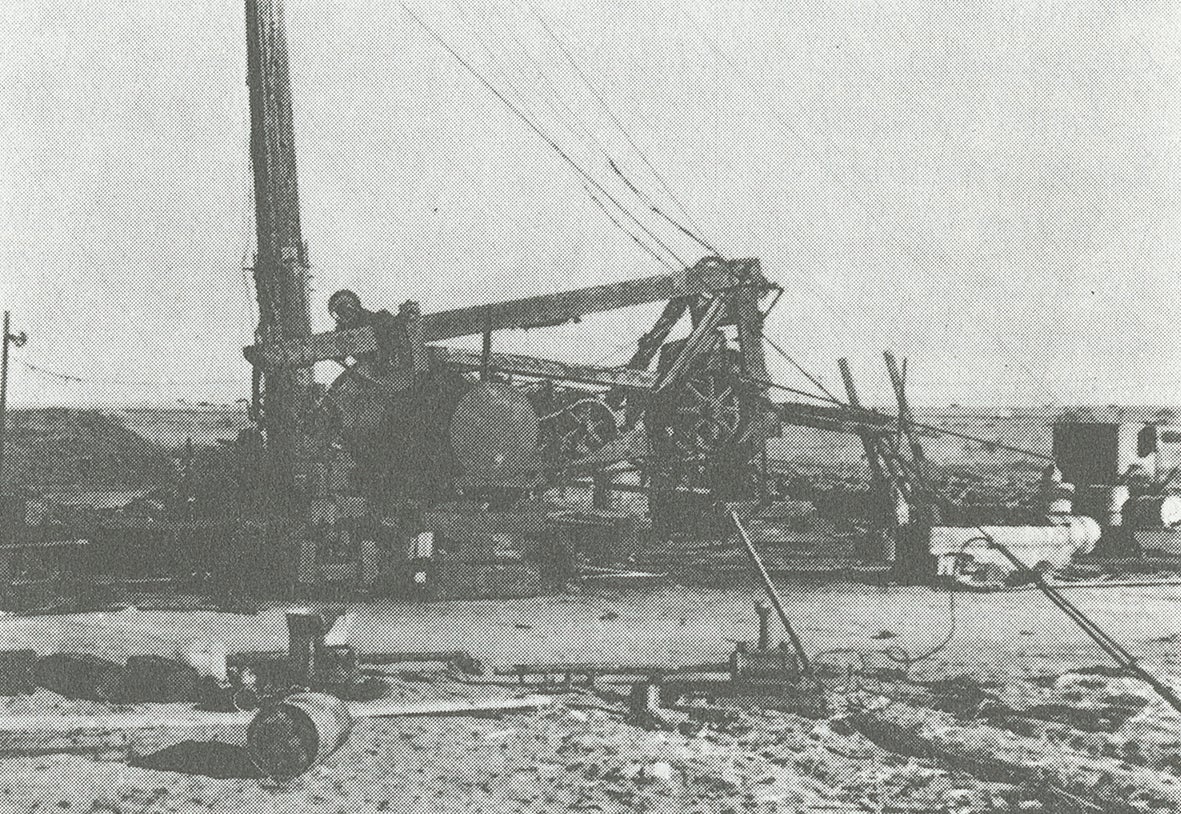
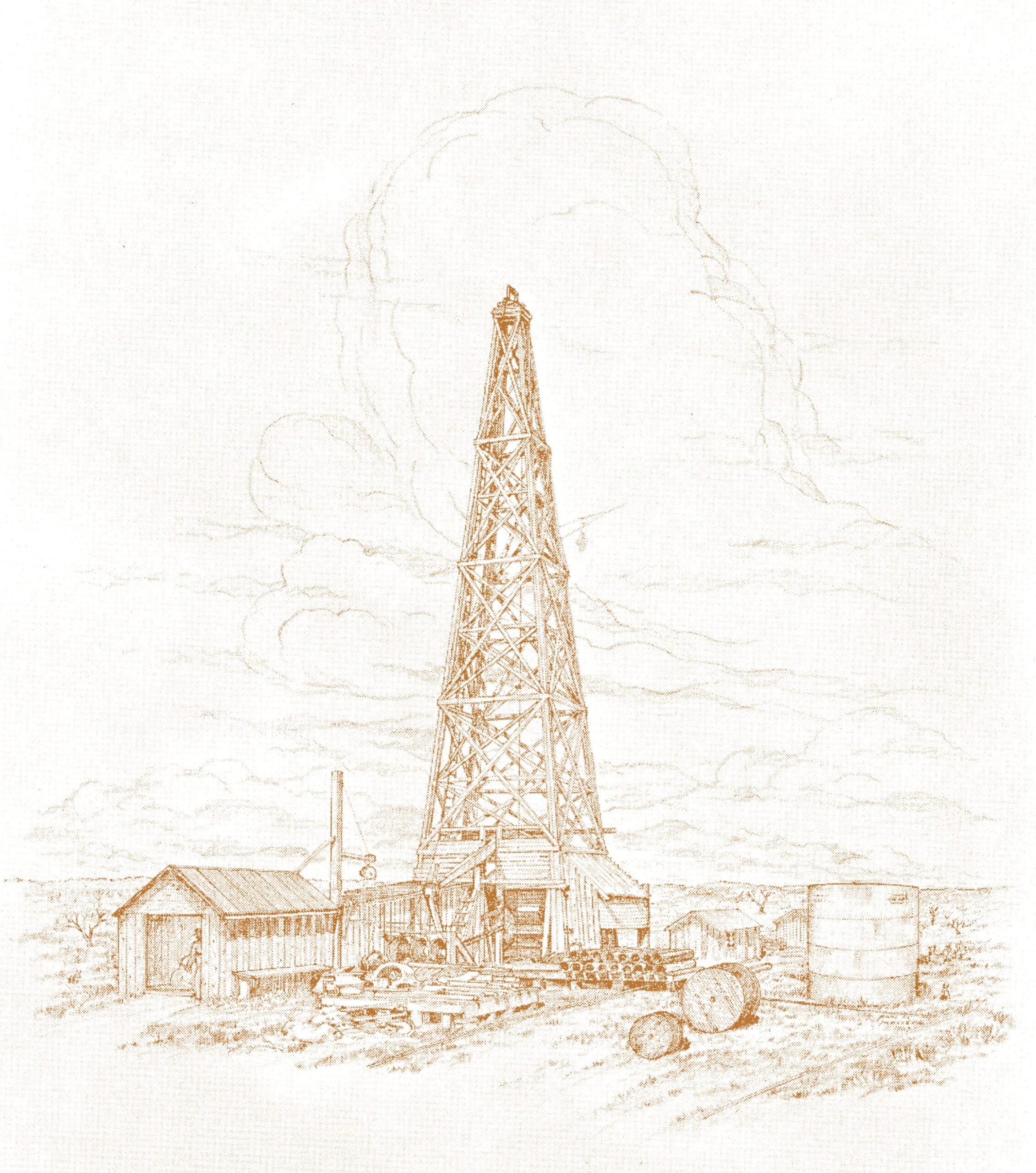
1990
Honoring a Legacy
The well was plugged in 1990, but oil still flows from other Permian Basin wells. In 2013, the McCombs School of Business launched an Undergraduate Energy Management program to train a new generation of oil and gas industry professionals.
About this Post
Share:
